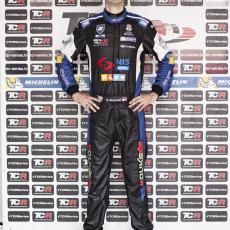
Bahrain International Circuit
Bahrein
All about the circuit
The Bahrain International Circuit (Arabic: حلبة البحرين الدولية) is a motorsport venue opened in 2004 and used for drag racing, GP2 and the annual Bahrain Grand Prix. The 2004 Grand Prix was the first held in the Middle East. Beginning in 2006, Australian V8 Supercars raced at the BIC, with the event known as the Desert 400. However, the V8 Supercars did not return for the 2011 V8 Supercar season. 24 Hour endurance races are also hosted at BIC. The circuit has a FIA Grade 1 license.
The Bahrain International Circuit hosts a number of high profile series, including the FIA Formula One World Championship, the FIA World Endurance Championship, the GP2 Series, Chevrolet Lumina Series, Thunder Arabia and Radical. Also every year there is the traditional 24 Hours of Bahrain.
In the past the circuit has hosted the FIA GT Championship, Speedcar Series, Australian V8 Supercars, GP2 Asia Series, and a one-off Bahrain Superprix involving Formula Three cars, following on from the collapsed Korea Super Prix. The first ever Formula BMW World Final took place in Bahrain.
History
The construction of the Bahrain circuit was a national objective for Bahrain, initiated by the Crown Prince, Shaikh Salman bin Hamad Al Khalifa. The Crown Prince is the Honorary President of the Bahrain Motor Federation. TRL was asked to build the circuit, headed by Patrick Brogan.
Race organizers were worried that the circuit would not be complete in time for the 2004 Bahrain Grand Prix and attempted to cancel the event; however, Formula One supremo Bernie Ecclestone refused this request. In the end, the circuit was not quite fully complete, but was good enough for the grand prix to go ahead.
After the 2004 race and ahead of the 2005 race the track was realigned at turn four, decreasing the the circuit's overall length by 5 metres.
In 2007 the circuit became the first Grand Prix circuit to be awarded the distinguished FIA Institute Centre of Excellence award, given for excellent safety, race marshal, and medical facilities, and for the high standards of technology required to maintain these.
At the 2009 Grand Prix, BIC announced a collaboration with @bahrain to develop land next to the circuit. @bahrain is part of the Mumtalakat group of companies. @bahrain will dedicate more than 1 million square meters of business, entertainment and educational space with a value in excess of US$2bn (BHD 850million), making it one of the largest investment projects to take place in Bahrain in the past five years.
In 2011 the circuit was scheduled to be the first GP of the season. However, due to civil unrest in the country the race had to be cancelled in March 2011. On early June the FIA announced that the race would be scheduled for 30 October, the original slot for the inaugural Indian GP, which would be shifted to a season-closing date on 11 December. However, two days later following concerns from teams and other officials, the race organizers officially cancelled the race, choosing to focus their attention on the 2012 running. The 2012 Formula One calendar had the race scheduled for 22 April, the fourth of the season.
Construction and design
The circuit was designed by German architect Hermann Tilke, the same architect who designed the Sepang circuit in Malaysia. The main contractor for the project was Cybarco-WCT. The circuit cost approximately 56.2 million Bahraini Dinars (US$150 million) to construct. It has six separate tracks, including a test oval and a drag strip.
The circuit posed a unique problem. Positioned in the middle of a desert, there were worries that sand would blow onto the circuit and disrupt the race. However, organizers were able to keep the sand off the track by spraying an adhesive on the sand around the track.
The surface of the track is made of graywacke aggregate, shipped to Bahrain from Bayston Hill quarry in Shropshire, England. The surface material is highly acclaimed by circuit bosses and Formula 1 drivers for the high level of grip it offers. The same aggregate material is used at the Yas Marina Circuit for the Abu Dhabi Grand Prix.



























